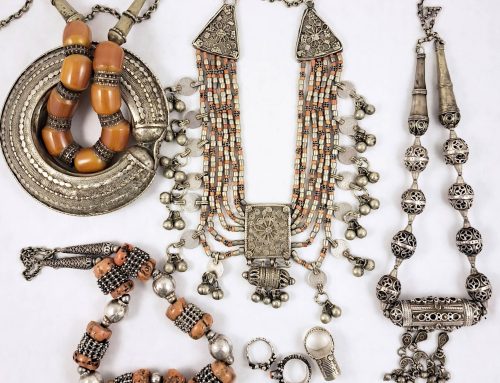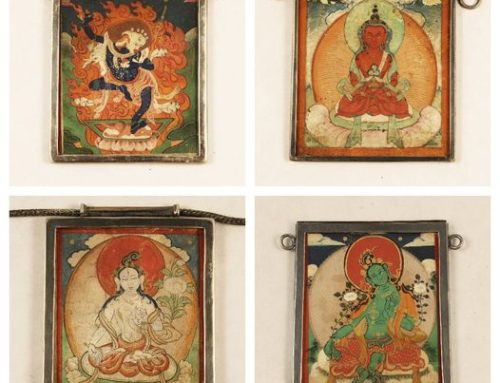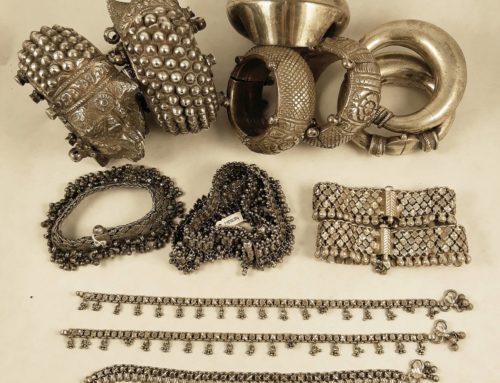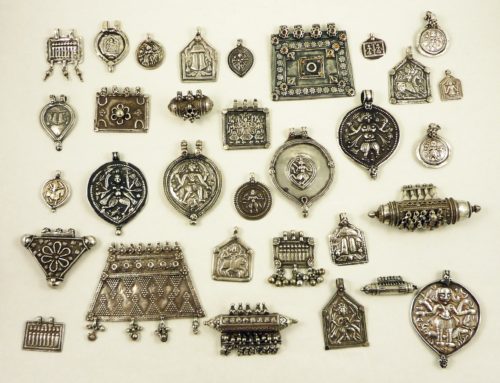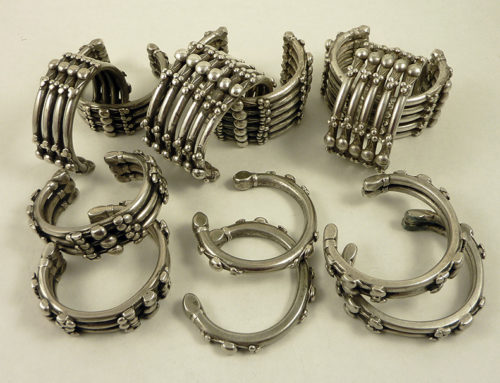Ottoman Empire jewellery
When we hear or read about Ottoman jewelry, the term usually refers to the lavish and grandious Ottoman court jewellery, that can still be seen on display in the Topkapi Palace in Istambul.
Although all kind of jewellery have stories and is interesting from my point of view, I am inclined to research about other ornament items that were made outside the court by silversmiths in diverse cities and villages along this vast empire.
The information around this jewellery items is scarce, apart from some books and studies that specifically mention the influence of Ottoman tastes in local production.

Ottoman jewellery history
The beauty of Ottoman pieces of jewellery didn’t come from nowhere. Anatolia, where the Ottoman Empire started, was a hot spot during the Neolithic and a flourishing region for the development of history, agriculture and civilizations. Some of the most ancient archaeological sites have been discovered there. And let’s not forget that the famous Priam’s Treasure from Troy, discovered by Schliemann, comes from this land!
Assyrian, Hittite, Akkadian, Hattian, Achaemenids among others… All of them left some influences in the Anatolian Region at that time. Later on, the Bizantine Empire gathered techniques, symbols and motifs from both Roman Western and Eastern regions and translated them into amazing gold pieces, lavishly decorated with enamel and gemstones.
It is directly from this tradition that the Ottoman jewellery (and Middle Eastern Muslim jewellery) based future developments.
Ottoman jewellery in diferent regions
Few items have survive from the very beginning of the Ottoman Empire, apart from some court jewellery that was kept in the coffers of the Sultan’s palace. The jewellery worn by people out of the court that has arrived to us was made in the last couple of centuries. So we don’t exactly know the evolution of styles and techniques. What we know for sure is that, as new territories were incorporated to the Empire, they developed a wide range of shapes and ornamentation that are difficult to distinguish from other regions of the Empire.
Take for example the gilded Kirdam that is shown in this post. These necklaces can be found from North Africa to Asia Minor and the Levant and were in fashion on the 19th century. The composition is nearly the same in all the necklaces, and only a deep observation of decoration and motifs can sometimes shed some light on the exact origin.
Also the triangular amulets like the one in the following picture was an export item made in various smithing centers at the core of the Ottoman world (Istanbul, Damascus, Sarajevo…) following a popular trend and fashion from the second half of the 19th century. The same can be said of the Tepelik hear ornament (see an example below), omnipresent in most of the Eastern part of the Ottoman Empire.
Some kind of belts were, in the same way, widespread along the Ottoman Empire, from the Balkans to Armenia, like the one shown here (see pictures at the bottom of the post). Greece and Bulgaria also had a large amount of ornaments with many similarities to the jewellery that was made in Turkish Ottoman territory, which is not surprising, as they were neighbouring countries and because these areas were under Ottoman rule for centuries.
In North Africa the Ottoman influence was mostly seen in the cities, were women wanted to wear similar ornaments to the Ottoman Bey ruling families and courts in the area. Berber/Amazigh jewellery continued to use their traditional symbols and techniques.
Apart from Istambul, where Christian Armenian and Jews were the most appreciate silversmiths, there were other important centers of jewellery production along the Empire. The common characteristic in all of them was the used of the tugra, the silver hallmark stamped everywhere in the Empire. Damascus, Aleppo and several Anatolian cities were important jewellery producers, as was Bosnia in the Balkans.









